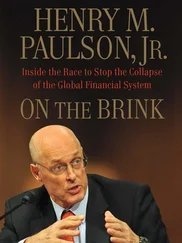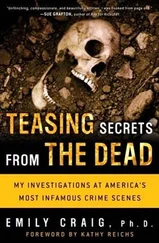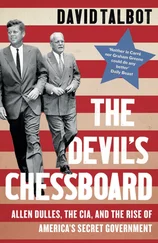Eventually, after the sun ducked behind Coahuila’s scrubby landscape, a pickup pulled up, and his brother’s guys drove José down a long road that snaked away from Piedras Negras and into the more remote countryside of Coahuila state, transitioning along the way from pavement to dirt and slipping through thickets of mesquite trees. Even five hundred miles from Dallas, it must have felt like home.
José had every reason to love life out there, in the countryside south of the river, surrounded by rolling hills, towers of hay, and roving bands of livestock. Some of the images he and his brothers clung to from their childhood were of them standing amid horses and cattle and whitetail deer in the open space of Tamaulipas.
There were centuries of tradition in ranching this territory. It was here that, in the 1600s and 1700s, Spanish missionaries established ranchos and missions on both sides of the river. When they couldn’t find enough Spaniards to staff them, they turned to the Indians they’d managed to convert. This introduction to horsemanship would backfire in later decades, when Mexican and American soldiers encountered more and more Comanches who were lethal on horseback.
It was also here, in the mid-1800s, that Richard King, a United States Army steamboat captain, recruited Mexican vaqueros, cowboys, to staff his King Ranch in newly established Texas. A century and a half later, the 825,000-acre Texas ranch is so famous that its name graces a line of Ford pickups. It’s also credited with the proliferation of the quarter-horse breed.
And it was here, across those same centuries, that Spanish, Mexican, and even some Anglo ranchers developed the heavily Spanish, Catholic culture, known as Tejano, that would come to define the region long after more aggressive Anglo settlers arrived to dispossess the Mexicans of their land and power.
By the time José Treviño Morales was born, in 1966, these borders were settled. Ranching still ruled. His father worked as a vaquero on ranch land south of Nuevo Laredo, where he taught José and his brothers to care for cattle and the sensible cow ponies that roamed their home state of Tamaulipas. But sometime before José hit high school, his dad left the family. It’s unclear whether he abandoned them, migrated in search of work, or disappeared under some other circumstances. Whatever the reason, he was gone, and so was the rancho lifestyle José and his brothers knew. There was nothing for the remaining Treviño clan in the countryside, so they moved into urban Nuevo Laredo and tried to survive.
The economics of that state of Mexico had long been fraught. Cities in the southeast were positioned along the Gulf of Mexico and offered jobs at the ports and in the oil industry. In the West sat Ciudad Victoria, the state capital. But the state’s northern tip, where José grew up, was an economic fault line, always shifting and occasionally rupturing.
During World War II, as the American agriculture industry struggled to find cheap labor, the United States and Mexico developed the Bracero Program, which invited Mexican laborers to cross legally into the United States to work farming jobs left unfilled by soldiers. The program offered a minimum wage, temporary housing, and health benefits, and it drew hundreds of thousands of seasonal workers every year, especially from borderland cities like Nuevo Laredo.
It also upended the culture of migration between the two countries. By the mid-1960s, the United States had issued more than four million work visas to Mexican farmworkers. Then, under pressure from American labor groups, the United States suspended the Bracero Program. But the migratory spigot wasn’t so easy to turn off. With Mexican families now accustomed to work-driven migration, and with fifty thousand American farms now accustomed to a steady flow of cheap labor, workers stayed, and workers kept coming—papers or not. Together with new visa limitations and waning Mexican farm jobs, the end of the Bracero Program sparked the influx of undocumented Mexican immigrants to the United States, which helped double the country’s Mexican-born population every decade through the 2000s. Instead of a hub for seasonal migrant workers, Nuevo Laredo became a key passageway for undocumented immigrants.
A year after the Bracero Program’s demise, the Mexican government launched the Border Industrialization Program, designed to absorb the suddenly idle labor force along the border. The program allowed American and other foreign manufacturers to build maquiladoras, factories, in Mexico and import materials tax-free. Hundreds of new factories created thousands of low-skill, low-wage factory jobs assembling electronics, toys, and other Black Friday grist. But manufacturers, in Mexico and across the globe, targeted women for the jobs, banking that their inexperience in the workforce, combined with old-fashioned sexism, would keep wages low. Eight out of ten maquiladora jobs were filled by young women.
That didn’t help the Treviño boys. The Treviño boys—all the Tamaulipas boys—needed jobs. José and his brothers washed cars and worked as gardeners, doing whatever they could to bring in money. But it wasn’t enough. If they didn’t want to smuggle drugs, the best place to find work was north of the river.
José’s big brother Kiko—short for Juan Francisco—went first, in 1978. He had shaggy black hair and a jawline that cast a shadow on his long, muscular neck, which was often exposed by a gaping shirt collar. Kiko was the oldest of the thirteen Treviño children, and he was smooth, able to talk himself up without stumbling into braggadocio. He was savvy, too, not just dreaming of a better way but figuring out a plan. He served as the de facto patriarch after their dad left, and he modeled manhood for his six younger brothers, marrying a local girl and raising a border-zigzagging family in the tradition of Los Dos Laredos .
Kiko’s in-laws were bricklayers in Dallas, so Kiko decided to try laying bricks in Dallas. It was a good time, and a good place to start a career in construction. Thanks to an oil boom, Texas’s population was growing twice as fast as the country’s, as workers and moneymen came to cash in. By 1980, one hundred thousand people were arriving in the Dallas–Fort Worth area every year.
Some of the new Texans were Mexicans and Mexican-Americans like Kiko and his family, but many were middle-class and wealthy white Americans. They needed houses, and schools, and strip malls. They needed Mexicans to build them.
Kiko had never laid a brick, but he learned to do it by watching his in-laws work the trowel. José came a few years later, when he was fifteen, bailing on high school. By the mid-1980s, Kiko had his own company, Treviño Masonry, and a crew of thirty-two fellow Mexicans building three houses at a time. He and José got their work visas, and got their Social Security numbers, and got their tax bills, and paid their tax bills. They banked enough money to buy a few shoebox houses in the working-class neighborhoods southeast of downtown Dallas. After laying bricks all day, they spent their nights remodeling those houses for their families. More work as bricklayers would mean more houses to buy and remodel, and more houses would allow more of their kin to move north. Their sisters had already made their way, and Mom was spending a lot of time in Dallas, too.
By the early 1990s, José was pulling in $43,500 a year, a decent wage for a no-diploma son of Tamaulipas. Kiko was doing well, too. But Kiko craved more, and he saw it in the arrival of the North American Free Trade Agreement (NAFTA).
It was well known that NAFTA would open the floodgates all along the United States’ two-thousand-mile southern border, increasing imports from $40 billion to almost $300 billion over the next two decades. Laredo would benefit especially from its place at the southern tip of U.S. Interstate 35, a thumping artery that stretched north from Laredo through San Antonio, Austin, Dallas, Oklahoma City, and beyond. Once NAFTA passed, Interstate 35 would be clogged with thousands of eighteen-wheelers, carrying goods through Texas and into the Midwest.
Читать дальше












